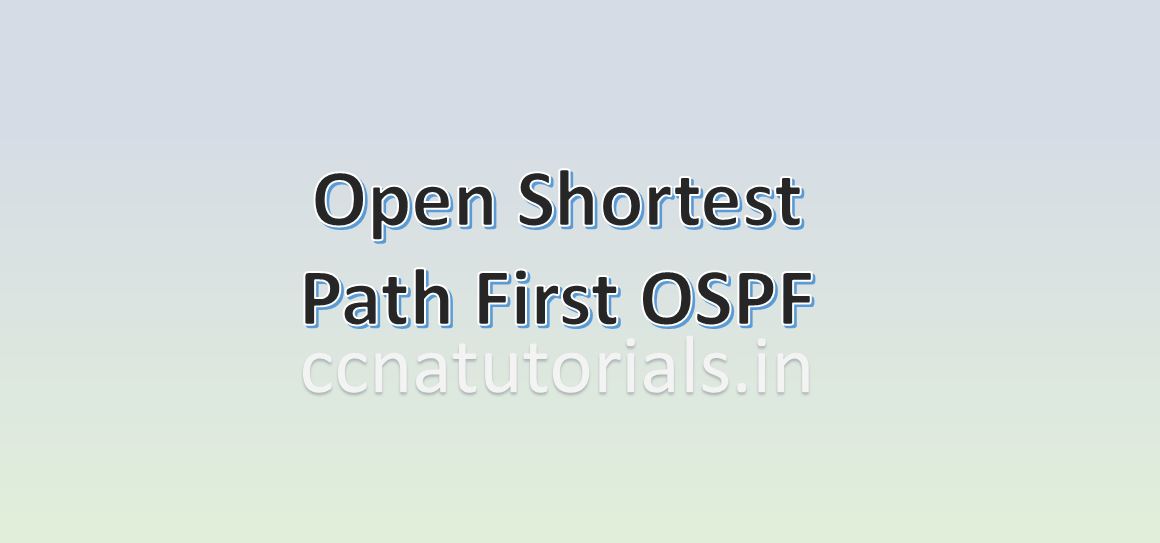Contents of this article
In this article I describe the protocol Open Shortest Path First OSPF fundamentals. Routing protocols helps router to build and maintain the routing table in routers. Routing protocols are one important part of default routing in router. Routing protocols inform the router about the networks connected at each interface. Routing protocols doesn’t carry or push the data packets in any way. Any change in the network required to be update in the routing tables of all routers. This task is carried out by the routing protocols. Routing protocols help the routers to select the best path to exit the data packets.
Example of routing protocols are RIP, RIPv2, IGRP, OSPF etc. Routing protocols further divided into distance vector, link state and hybrid protocols. These all routing protocols update the routing table of all routers in the network. You can see the routing protocols by “show ip route” command in privilege command mode of router. Routing protocols are not responsible for data packet flow in any way. Routing protocols spread the information of network hierarchy to all routers.
Open Shortest Path First OSPF fundamentals
Open Shortest Path First OSPF is a routing protocol. The purpose of this protocol is to find the best and short path from source to destination in a network. Open Shortest Path First OSPF is a link state protocol which works on updates about the networking devices in the network. The Open Shortest Path First OSPF is one of the Interior Gateway Protocol IGP.
Open Shortest Path First OSPF function on layer 3 network layer on port number 89. The Administrative Distance AD for OSPF is 110 by default. The multicast IP address used by OSPF is 224.0.0.5 and for updates IP address 224.0.0.6. A term Area used in OSPF protocol which define the position of the router. The routers configured with same Area number belongs to same area. See the image below

Conditions in which Open Shortest Path First OSPF works
There are some conditions in which the Open Shortest Path First OSPF protocol works between two routers. All routers should be in same area configuration. The time of hello message should be same in all routers. The router ID should not be same, it should be unique for each router.
The network ID or subnet mask should be same for all routers. The routers should have same type of authentication enabled. The authentication method may be NULL, MD5 or Plain Text. So if one router uses Plain text the other one should also be used the same method Plain text.
Timers used in Open Shortest Path First OSPF
There are two timers used with Open Shortest Path First OSPF. The one is hello timer and another one is Dead timer. Hello timer confirms the status of neighbour router. The time interval of hello message is 10 seconds by default. Dead timer used to indicate the neighbour router is dead. Hello message regularly sent on an interval of 10 seconds. If a router does not send the hello packets up to 40 seconds, declared dead. So the dead timer default interval is 40 seconds.
Messages used by Open Shortest Path First OSPF
Some predefined message used by Open Shortest Path First OSPF for updating and other activities. These messages used by router which operate the OSPF.
Hello message used by router to know the live status of neighbour router. Hello message sent on a fix interval of 10 seconds. Hello message include the router ID and Area ID for identification of router.
Database Description message keep the information of network topology. This message contains the area ID and routing domain in which the router belongs. When a router received the database description message, it compares it with the old database description.
Link state request messages are updates of database. Link state update message are sent by router on receiving the Link state request. Similarly Link state acknowledgement message sent in response of Link state update message.
Open Shortest Path First OSPF features
OSPF supports both version of IP routed protocols IPv4 and IPv6. OSPF provides the load balancing feature for a particular destination with the help of cost factor. It supports the CIDR (Classless Inter Domain Routing) and VLSM Variable Length Subnet Mask. There is no limit of hope count in OSPF configuration. OSPF uses multiple message to spread the updates of network topology. The convergence time of OSPF is very low approx. 10 seconds. OSPF uses SPF algorithm to run a loop free traffic within the network.
I hope you found this article helpful related to Open Shortest Path First OSPF fundamentals. For any query or suggestion on this article you may drop a comment below or contact us. Your suggestions are always welcome by us.




